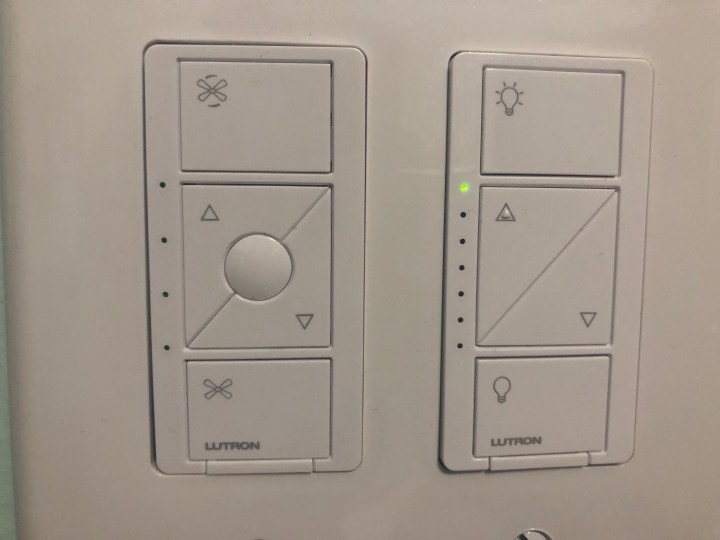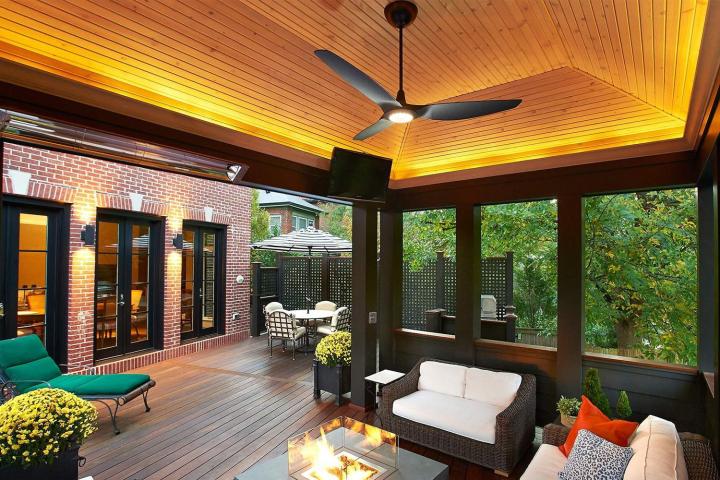“Alexa, turn on my lights.” When people think of a smart home, smart light switches are often one of the first products that come to mind. I literally have a dozen smart light switches scattered throughout my home. My smart light switch obsession began a few years ago before they installed street lights in my neighborhood. At nighttime, the front of my house was dark and spooky like a scene from a scary movie, so I wanted to be able to turn on the flood lights from my phone when I pulled into the driveway. I installed a smart light switch in place of the flood light switch, and from there, there was no turning back. After that, I installed smart light switches in my kitchen, living room, and every bedroom. I was so enamored with the ability to voice-control my lights, I’d do things like ask Alexa to turn on the kitchen light even if I was standing right next to the switch. I went all out and installed smart switches everywhere, including the bathrooms.

One thing about smart light switches is that they require specific wiring, so I couldn’t install a basic smart switch in the office because there’s no neutral wire. Then, I found the Lutron Caséta Smart Dimmer Switch. The Dimmer Switch doesn’t require a neutral wire, but you do need a bridge if you want to connect it to Alexa (or the App). Now that I have a smart switch installed in every room including the office, I feel like my life (or should I say my lighting) is finally complete.
In addition to smart light switches, we’re now seeing switches and remotes that control other things in the home like fans and shades. Lutron recently came out with a smart switch that controls ceiling fans, the Lutron Fan Speed Control Switch, and I had the opportunity to test it out. Here’s my first-hand review of the Lutron Caséta Fan Speed Control Switch straight from a smart switch fanatic.
Easy Installation

Unlike the Lutron Caséta Dimmer Switch, the fan control switch doesn’t currently have the option to purchase it as a starter kit with an included bridge and remote control. It comes with only the switch, which comes in either white, black, ivory, or light almond, and you can purchase the corresponding remote control separately. The fan speed control switch is compatible with virtually any single 1.5A or less ceiling fan, and it can give a plain old ceiling fan ‘smart’ features.
The switch is very easy to install, but it does require a neutral wire. I had to set the fan to the highest speed setting using the pull chain, disconnect the power at the breaker, remove my existing switch from the wall, and connect four wires. I connected the hot wire from my lighting box to a screw terminal on the fan control switch, and I connected the out wire to the out wire on the switch, the neutral wire to the neutral wire, and the ground wire to the ground wire. I secured the wires in place with wire connectors, neatly placed the wires in the box, mounted the fan control and plate to the wall, and restored power at the breaker.

The entire process took about 25 minutes. However, I have installed about a dozen smart switches before. For someone who has never installed a smart switch, the process may take a bit longer. But, anyone with a little bit of DIY knowledge could absolutely install the fan speed control switch without a problem.
Use Alexa, Google Home, HomeKit, or Pico Remote

After I installed the fan switch, I connected it to the Lutron App, which is available for iOS or Android. You must have a Lutron bridge to connect to the switch to the app, though.
After that, it’s pretty much smooth sailing. Even though I have an old and rickety fan, I could voice-control my fan and its speed using Alexa, Google Home, or Apple HomeKit. There’s also a cool remote, called a Pico remote. It doesn’t come with the switch, but it’s an accessory. The battery-operated Pico remote lasts for 10 years, and it mounts onto the wall or onto a desk or table, so it’s pretty hard to lose it. You can slide it off of the mount and use it to turn power the fan on or off or to control the fan speed.
The ‘Extras’ Really Add Up

If you only connect the Lutron Fan Speed Control Switch and you don’t have a bridge to connect it to the app, you basically just have a fan on and off switch with buttons that will turn the speed of the fan up and down. If you want the switch to be smart, you’ll need to purchase a few extras.
If you already have the Lutron Dimmer Switch Starter Kit with the included bridge, then purchasing the fan speed control switch isn’t going to be that big of a deal. However, if you are starting from scratch, and you want to use all of the smart features this switch has to offer, you’ll need to purchase the bridge (or the Lutron Dimmer Switch starter Kit) in addition to the Fan Control Switch.

The fan speed control switch is $80, but you can usually find it for around $60. The Pico remote is $40. On top of that, if you buy the Lutron bridge (usually costs around $80) or the Dimmer Switch starter kit (which is a better value than the bridge alone and usually costs around $100), this all adds up to more than $200 for a full-featured system.
Solid performance

The Lutron Fan Speed Control Switch does what it’s supposed to and it does it well. It turned my dumb fan into a smart fan, and it allowed me to say things like, “Alexa, turn my fan on to low speed” or “Siri, turn my fan on to medium high.” Since I have both a Lutron Caséta Dimmer Switch and a Caséta Fan Speed Control Switch, I can even set scenes, like a bedtime scene, that turns my fan onto high and dims my lights to 10 percent. If you have other Lutron smart home products like shades, you can incorporate those into your scenes as well.
The app is exceptionally easy to use, and it works without incident. I’m able to control my fan when I’m away from home, so I can turn it off from the car (or from anywhere really). The Pico remote works every time too, and I can turn my fan on or off or control the fan’s speed with the remote from about 30 feet away.
It controls your fan, but that’s about it

The Lutron Caséta Fan Speed Control Switch does work, and it absolutely does provide me with the ability to make my dumb builder-grade ceiling fan into a voice-controlled smart gadget I can control with Alexa, Google Home, or Apple HomeKit (provided I connect a bridge). However, all this switch really does is turn a ceiling fan on and off and control the speed of the fan.
You can purchase an inexpensive smart light switch (for about $30 to $40), that will turn a fan on and off and doesn’t require any type of bridge to connect to an app, Alexa, or Google Home. These inexpensive switches will not, however, control the fan’s speed, and the Lutron Fan Speed Control Switch allows you to adjust between four speeds.
I have other smart switches in my home that can turn a fan on and off. In one of the bedrooms in my home, I have a two-gang switch, where one button controls the ceiling fan light, and one button turns the power to the fan on and off. The Lutron Switch (and the corresponding app) is much better quality than the inexpensive switch, but the cheaper switch does work reliably.
Is it worth it?

If you already have a Lutron Dimmer Switch Starter Kit (e.g. you already have a bridge), the Fan Control Switch will probably be a cool addition to your smart home. Keep in mind that you do need a neutral wire to install the fan switch, while the Lutron Dimmer Switch does not require a neutral wire. The ability to easily install without a neutral wire was part of what made the Lutron Caséta Dimmer Starter Kit such an attractive option.
If you don’t already have Lutron products in your home, you may want to think hard before buying the fan control switch and ask yourself: Is the ability to control your fan’s speed and getting a better app worth paying more than double the price for a smart switch, not including buying a separate bridge? For some people who like to have the latest and greatest tech, or those rely heavily on their fans for cooling, the answer may be yes. But, if you don’t care about controlling your fan’s speed, you might be better off with a cheaper option.
Editors' Recommendations
- The best smart light switch for Alexa, Google Home, and HomeKit
- The best smart blinds for Google Home, Alexa, and HomeKit
- Fluid One gives you point-and-click control of your smart home, from your smartphone
- Renpho teams up with MyFitnessPal to make smart tracking that much easier
- GE expands Cync smart light lineup, adds climate control, camera


